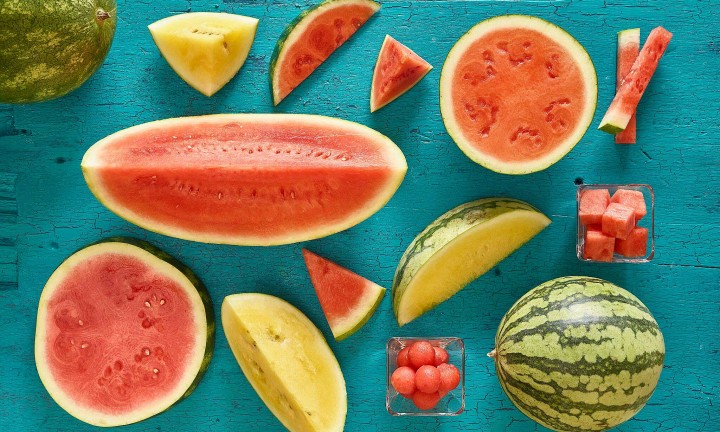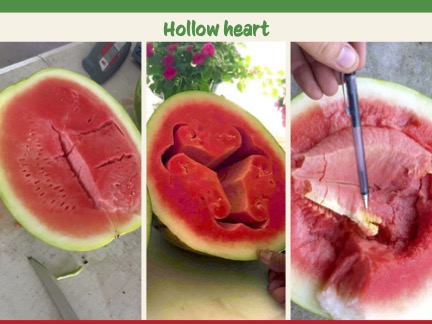Product Training

Types & Availability
More than 300 varieties of watermelon are cultivated in the United States and South America, where complementary growing seasons provide a year-round supply of watermelon in an array of shapes, colors and sizes. The development of seedless varieties revolutionized the watermelon market, making this age-old fruit appealing to today’s more discriminating consumers. Because there are so many varieties, they are often grouped according to characteristics, like fruit shape, rind color or pattern, and size.
The most common watermelon types are: Seeded, Seedless, Mini, Yellow, and Orange. Learn more.
Watermelon is available year-round! View the current peak production calendar, covering U.S. grown and imported watermelons.
PLU/UPC
Watermelon PLUs include the following:
- 4031 – Red Seeded Watermelon
- 4032 – Red Seedless Watermelon
- 4347 – Fresh Cut/Half Watermelon *Stop and Shop
- 4340 – Yellow Seeded Watermelon
- 4341 – Yellow Seedless Watermelon
- 3281 – Orange Seedless Watermelon
- 4331 – Mickey Lee/Sugar Baby
- 3421 – Mini Seedless Watermelon UPC Codes
- 3494 – Yellow Mini Seedless Watermelon
The series of PLU codes available for retailer assignment range from 4342 to 4376. They can be used to distinguish a specialty watermelon, a unique size or cut melons.
PLU codes in the PLU codes database represent conventionally grown fresh produce. To identify an organic item, the prefix of ‘9’ is inserted in front of the 4-digit conventional PLU code. There are no other existing established prefixes other than the ‘9’. Any other prefix used or length other than the standard 4-digit or 5-digit number is not part of the internationally standardized list of PLU codes for use with fresh produce. For more information, visit https://www.freshproduce.com/resources/supply-chain-management/plu-codes/.
These are UPC codes established for watermelon so far. All are for use with generic watermelon manufacturer #033383:
- 402406 – Red Flesh Seedless Watermelon
- 402413 – Orange Flesh Seedless Watermelon
- 402420 – Red Flesh Seeded Watermelon
- 402437 – Mini Seedless Watermelon
- 402475 – Mini Seedless 2-count boxes
- 402635 – Yellow Seedless Watermelon
- 402642 – Mini Yellow Seedless Watermelon – 2 ct mesh bag
- 402697 – Organic – Mini Seedless Watermelon – 1 ct mesh bag
- 911236 – Mini Yellow Seedless Watermelon
- 911243 – Mini Orange Seedless Watermelon
Starting in 2020, new generic Universal Product Codes will not be issued for produce in the U.S. and Canada, with company-specific codes taking their place. Floral products are not included in the policy change and current generic UPCs for fresh produce will not be affected for now. Should you be interested in applying for your own UPC code and manufacturer number or for more information, visit http://www.producetraceability.org/.
Storage & Yield
Storage & Selection – It’s as easy as 1, 2, 3 or Look, Lift, Turn!
Yield: Using safe handling practices, as outlined by USDA, this cutting sequence resulted in the highest yield of cut fruit. Remember to wash your watermelon before cutting.

Hollow Heart
Hollow Heart is a condition that can sometimes occur in watermelon, previously thought to be as a result of disruptive weather patterns. While the internal cracking has no negative impact on the taste, quality or safety of the product, its appearance upon cutting may raise questions with customers who are not familiar with the symptom. These materials will provide you and your produce department staff with all the current scientific and regulatory information on the subject.
U.S. Standards For Grades Of Watermelon
Watermelon Inspection Instructions
